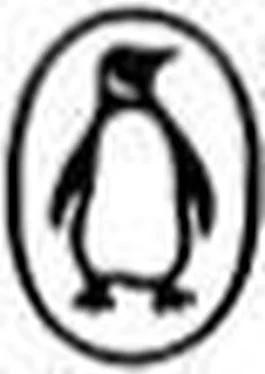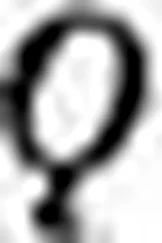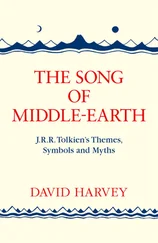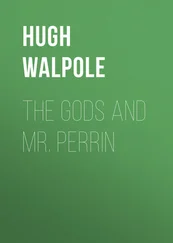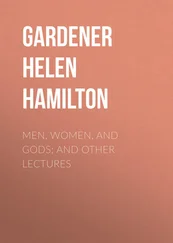Davidson, H. - Gods and Myths of Northern Europe
Здесь есть возможность читать онлайн «Davidson, H. - Gods and Myths of Northern Europe» весь текст электронной книги совершенно бесплатно (целиком полную версию без сокращений). В некоторых случаях можно слушать аудио, скачать через торрент в формате fb2 и присутствует краткое содержание. Жанр: Старинная литература, на английском языке. Описание произведения, (предисловие) а так же отзывы посетителей доступны на портале библиотеки ЛибКат.
- Название:Gods and Myths of Northern Europe
- Автор:
- Жанр:
- Год:неизвестен
- ISBN:нет данных
- Рейтинг книги:5 / 5. Голосов: 1
-
Избранное:Добавить в избранное
- Отзывы:
-
Ваша оценка:
- 100
- 1
- 2
- 3
- 4
- 5
Gods and Myths of Northern Europe: краткое содержание, описание и аннотация
Предлагаем к чтению аннотацию, описание, краткое содержание или предисловие (зависит от того, что написал сам автор книги «Gods and Myths of Northern Europe»). Если вы не нашли необходимую информацию о книге — напишите в комментариях, мы постараемся отыскать её.
Gods and Myths of Northern Europe — читать онлайн бесплатно полную книгу (весь текст) целиком
Ниже представлен текст книги, разбитый по страницам. Система сохранения места последней прочитанной страницы, позволяет с удобством читать онлайн бесплатно книгу «Gods and Myths of Northern Europe», без необходимости каждый раз заново искать на чём Вы остановились. Поставьте закладку, и сможете в любой момент перейти на страницу, на которой закончили чтение.
Интервал:
Закладка:
Much has been made of such points of resemblance, and also of parallels with Christian accounts of the burning of the world at doomsday, the darkening of the sun, and the falling of the stars. It is obvious that if one contemplates the destruction of the world, whether in a religious context or not, certain possibilities are bound to occur to the mind. Destruction by intense heat and cold and inundation by water are likely to be among them. As we shall see later, this was particularly so for the people of Iceland. It must be admitted too that the falling of the stars and the darkening of the sun could well come into a poet’s mind, even if he had not studied apocryphal literature or the writings of the early church. Robert Burns could swear to love his girl
Till a’ the seas gang dry, my dear,
And the rocks melt wi’ the sun…
and cosmic imagery of this kind is part of the common literary and imaginative heritage of others beside theological scholars. Therefore I would discount much of what has been written deriving the material of Vǫluspá from Christian sources. It is true that the morbid insistence on the terrors of Judgement Day in the writings and sermons of churchmen may well have had an effect on those outside the pale of the Christian church. But it would be insufficient in itself to account for the idea of the ending of the world among the heathen Scandinavians.
It is worth noting that both in the Edda and in the work of the early skaldic poets we find traces of a conception of the universal destruction of the world. There is a reference to the falling of the stars in a ninth-century poem of Kormak, and one to the overwhelming of the earth by the sea in the Shorter Vǫluspá . A passage in Saxo describing the battle in which Harald of Denmark fell reads as if it were based on some poetic account of the world’s ending:
The sky seemed to fall suddenly on the earth, fields and woods to sink to the ground; all things were confounded, and old Chaos come again; heaven and earth mingling in one tempestuous turmoil, and the world rushing to universal ruin. Gesta Danorum , VIII, 262
Of particular interest is an inscription carved in runes on a Swedish memorial stone from Skarpaler, read by von Friesen as: iarp s [ k ] al rifna uk ubhimin , which he interprets: Earth shall be torn asunder, and high heaven. 1If this reading is correct, this brief inscription implies that the idea of the destruction of the world was familiar in Sweden, and that it was taken as a fitting subject for a memorial stone to the dead. A scholar’s theory from a foreign source is not likely to find its way on to a gravestone. This stone is not a conventional Christian one, for a kind of cross is shown with its base in a boat, which it has been suggested might represent the ship of the dead. It seems likely that the inscription is a quotation from a poem.
Besides the destruction of earth and heaven, we have a second theme in Vǫluspá , the breaking loose of the monsters. In the tenth-century court poem Eiríksmál , composed on the death of a king of Norway, Odin is asked why he has caused the king to be slain. His reply is: The grey wolf is watching the dwellings of the gods. The implication here is that Eric was needed to join the warrior host of Odin in readiness for the last great battle, and the oblique style of the reference presupposes that Ragnarok was a theme familiar to the poet’s audience. Whether it was usual to visualize the other gods dying along with Odin when he was devoured by the wolf is not certain. Valid reasons why they should perish can be found in the myths: Thor’s special adversary was known to be the World Serpent; Tyr bound the monster, and therefore might expect vengeance if it broke loose; Freyr, the bright god who gave away his sword when he wooed Gerd, is matched against Surt, the fire-bringer, whose weapon shone like the sun; Loki was an old enemy of Heimdall, and Snorri brings them together once more. The deaths of Odin, Thor, and Freyr are already given in Vǫluspá , and the others may have been added by Snorri on his own initiative.
There seems little doubt that the destruction of the worlds and the breaking loose of the monsters were ideas familiar to heathen thought. It would be remarkable if a poem of tenth- or eleventh-century date, as this is judged to be, should be completely devoid of Christian influence, and when a resemblance is seen between the horn of Heimdall and Gabriel’s trumpet, or reference to the sins of men or to the return of Balder suggests Christian teaching, this could be due either to vague influences from the new faith, or to a deliberate sense of parallels in the poet’s mind. But this is a different matter from assuming that the whole concept of Ragnarok in the poem is an imitation and refashioning of Christian ideas about the Last Judgement. One cannot but feel that scholars who have made such a suggestion have been driven on by the pursuit of isolated details and their own theories, and have neglected to sit down and read the poem through again with an open mind.
As with the World Tree, we are very conscious of associations with thought and imagery outside northern Europe in this picture of the world’s ending. A tenth-century Bavarian poem about the world’s destruction uses the word Muspilli in a Christian context, apparently referring to the fire which is to burn the earth. The same word occurs in a ninth-century Old Saxon Christian poem, Heliand ; this has a reference to the power of Mudspell over mankind, and a statement also that Mutspelli comes like a thief in the night. Some scholars have thought that this must be the name of some ancient power hostile to the gods, remembered and used in a Christian setting. In that case the sons of Muspell mentioned in Vǫluspá may have been an early conception once familiar in Germany. Others have tried to prove that the idea of a world of fire in the south, from which the sons of Muspell come, was of Iranian origin. It has already been noticed that several points in the account of the ending of the world can be paralleled from Iranian sources. Reitzenstein 1and others have claimed that there must be Manichean influence behind the Norse conception of the destruction of gods and men. The points which they make are of interest, but they are concerned with minor resemblances only, and no direct proof of influence for the whole conception has been found. Nor is it easy to see how Manichean ideas could have reached the north so as to be embodied in a tenth-century poem. However, in view of other resemblances noted by Olrik and mentioned earlier, in particular the idea of the sheltering of men and beasts from the great winter, the possibility of new influences coming into Scandinavia during the Viking age must be borne in mind.
In considering Ragnarok, we must take into account a series of carvings on stone which were executed about the tenth century in northern England at a time when the Viking settlers were well established there, some of which have already been mentioned (pp. 173 and 179). There seems little doubt that the scenes on the cross at Gosforth in Cumberland have been based on an account of Ragnarok closely resembling that given in Vǫluspá and Snorri. Here monsters struggle in bonds; a woman holds a bowl beside a bound figure, suggesting Sigyn and Loki; a figure battles with a monster, holding open its jaws with hand and foot, precisely as Vidar was said to do when he slew the wolf that had swallowed Odin. In addition we have a figure with a horn, and a warrior riding into battle. So many separate points of resemblance seem to establish the fact that the artist was working on a series of scenes deliberately grouped together. All these scenes were capable of a Christian as well as a heathen interpretation, and as there is a Crucifixion scene on the other side of the cross, there is no doubt that it was erected as a Christian monument. 2In the same church where this famous cross was erected, we have a stone, probably part of another cross, which appears to show Thor fishing for the World Serpent. There are also two much-worn hog-back tombstones, which are covered with elaborate carvings. One shows figures struggling with serpents, and the other, two armies approaching with spears and shields as though for a great battle. Other carved stones which have been thought to show incidents from the final battle of the gods have been pointed out in the Isle of Man.
Читать дальшеИнтервал:
Закладка:
Похожие книги на «Gods and Myths of Northern Europe»
Представляем Вашему вниманию похожие книги на «Gods and Myths of Northern Europe» списком для выбора. Мы отобрали схожую по названию и смыслу литературу в надежде предоставить читателям больше вариантов отыскать новые, интересные, ещё непрочитанные произведения.
Обсуждение, отзывы о книге «Gods and Myths of Northern Europe» и просто собственные мнения читателей. Оставьте ваши комментарии, напишите, что Вы думаете о произведении, его смысле или главных героях. Укажите что конкретно понравилось, а что нет, и почему Вы так считаете.
